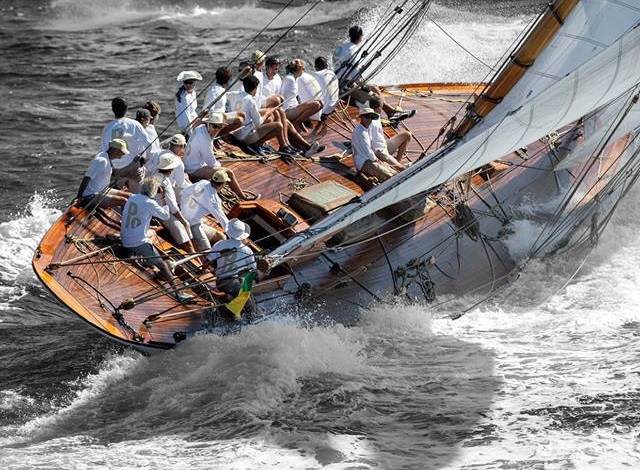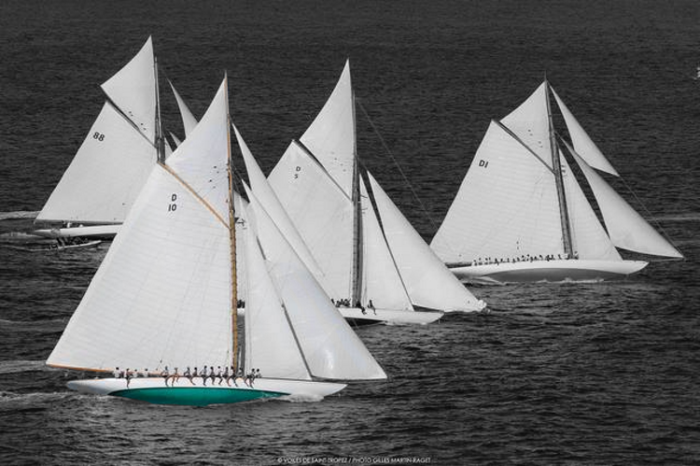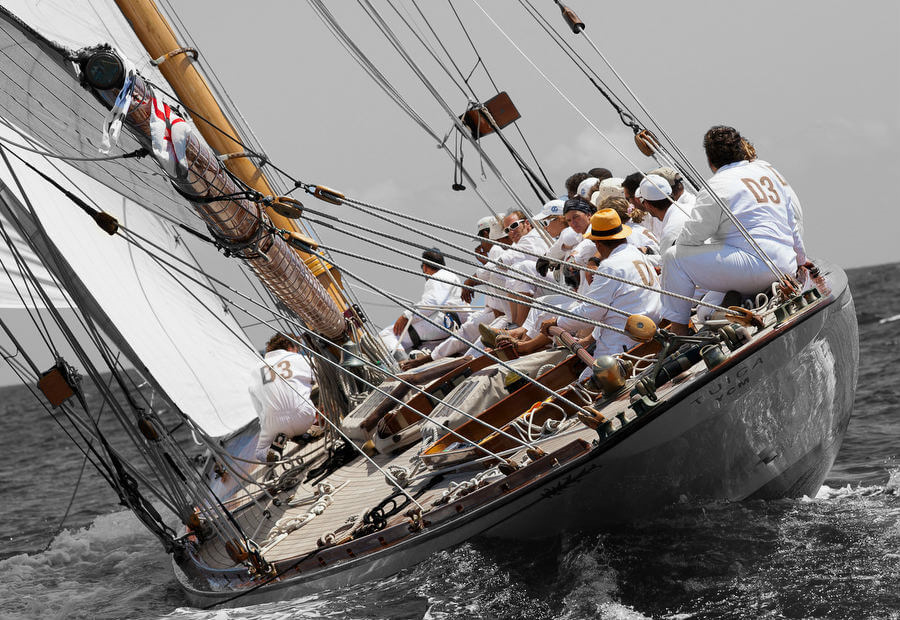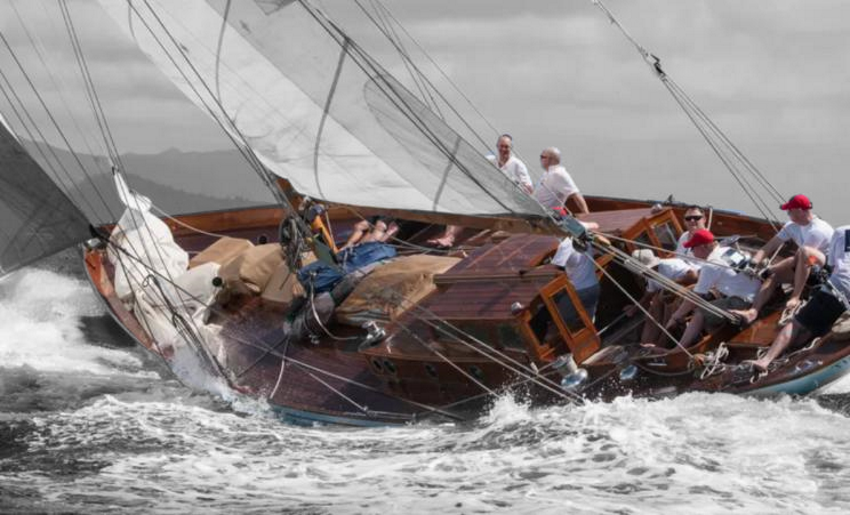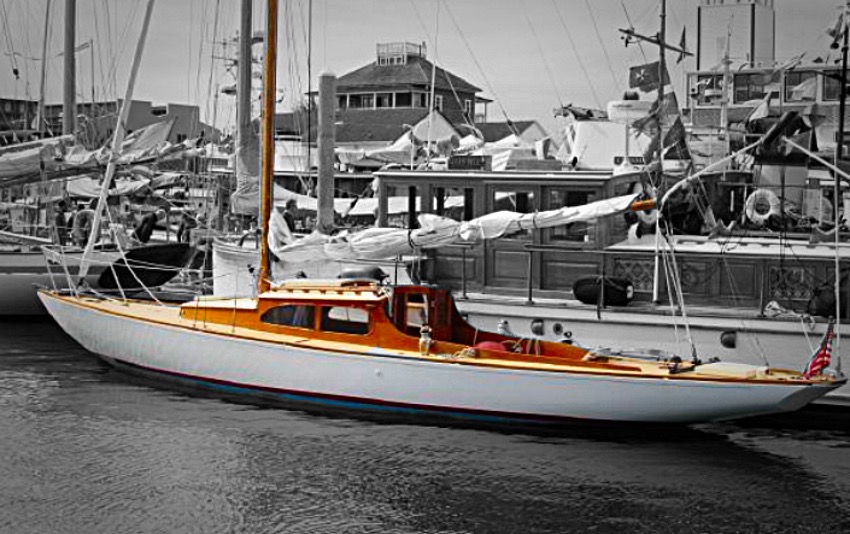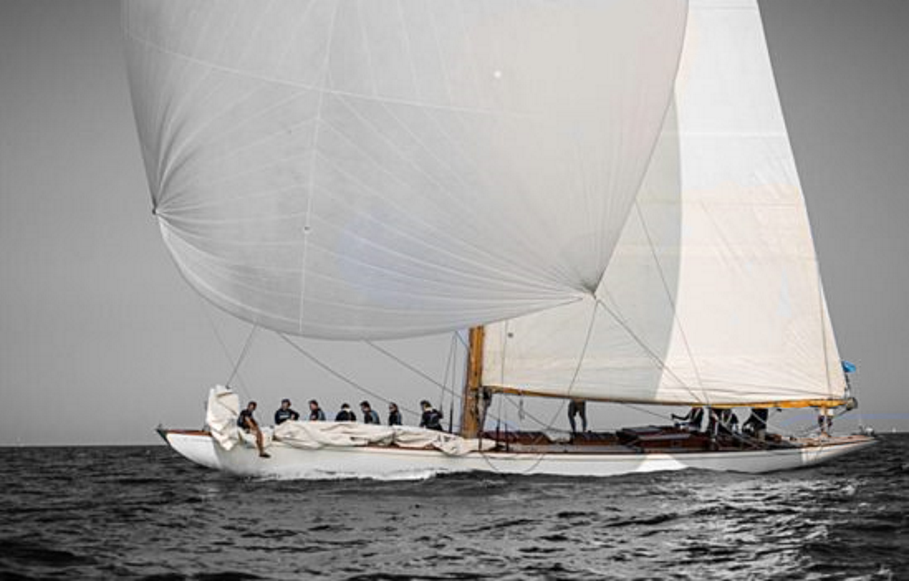
Sail Number: D-1
Type: 12mR (S” Scandinavian Rule – converted to the International Second Rule.
LOA: 65’10” / 20.07m – LOD: 65’10” / 20.07m – LWL: 44’3” / 13.48m – Beam: 11’5” / 3.48m – Draft: 8’7” / 2.62m – Designer: Johan Anker – Design Number: 206 – Original Name: Santa – Original Owner: Jacob B. Stolt Nielsen – Year Built: 1918 – Built by: Anker & Jensen, Oslo – Hull material: Mahogany / Oak frames – Sail Area: – Displacement: 26 tonnes – Engine: Perkins 465HP (2001)
Historical:
Thea was designed and build by Johan Anker in Norway in 1918, and was one of the first yachts to be rigged with Bermuda rig.
Thea was originally built according to the “S-Formula”, valid in Scandinavia. A rule proposed by J. Anker himself in 1916, as a change to the First International Meter Rule from 1907. These changes to the rule led to the The Second International Rule in 1919. Since then Thea was, along with the other S-Formula yachts, converted and rated as a 12mR S.I. (Second International rule)
Provenance (The Wall of Remembrance – The Owners, Crew & Notable Guest):
- Owner/Guardian: (1918 – 1921) Jacob. B. Stolt – name: SANTA – home port: Haugesund – rig: Bermudan cutter She was commissioned by the grandfather of the present Jacob Stolt Nielsen, the owner of the big shipping company with the same name. Originally built according to the “S” formula proposed by J. Anker in Scandinavian during the First Rule renegotiation which changed in 1919 to the second version of the formula. Since then Santa was rated as a 12m I.R.; the building started on Dec. 5th, 1917
- Owner/Guardian: (1922 – 1932) And. F. Kiaer – new name: TENDEREN III – home port: Frierikstadt (Norway)
- Owner/Guardian: (1933 – 1936) L. Rolfsen – new name: GAVOTTE III She entered the K.N.S. Jubileum Regatta in July 1933 in the class of the Twelves not R and she was awarded one first and two seconds
- Owner/Guardian: (1937 – 1969) Leif Hiegh – new name: SANTA – home port: Oslo – engine installed in 1959, re-powered 1964
- Owner/Guardian: (1970 – 1998) Baron Ebbe Wedell-Wedellsborg – new name: NINA – home port: Rungsted In 1993 she underwent major maintenance work. From 1972 she spent every winter at the Walsted yard and has had continuous maintenance; most of the hull timber is still original
- Owner/Guardian: (Since Aug. 1998) Hans Michael Jebsen and ITMA Vice President, Patrick Howaldt – new name: THEA – home port: Copenhagen Since then she has had a major restoration, including new spruce spars, a new engine; the interior has been brought back very close to the original. She is a very active racer both in the classic circuit in Scandinavia and in Danish races where she sails under the DH Danish handicap system.
Resources
12 mR’s of Denmark
International 12 Metre Association
Comments
Roberto – October 11, 2021
Buongiorno. Solo poche righe di messaggio per sapere se,in questo sito,esiste una pagina con le inserzioni di barche in vendita. Grazie. Roberto

